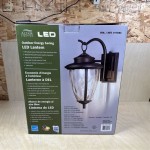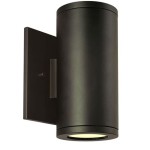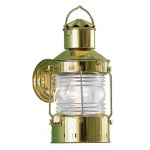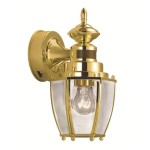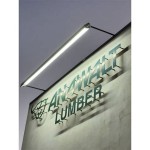Best Stain for Cedar Outdoor Furniture
Cedar is a popular choice for outdoor furniture due to its natural beauty, durability, and resistance to rot and insects. However, like all wood exposed to the elements, cedar requires protection to maintain its appearance and prolong its lifespan. Applying a stain is a crucial step in protecting cedar furniture from sun damage, moisture, and mildew. Choosing the right stain involves understanding the different types available and their suitability for cedar.
Types of Stain for Cedar
Stains can be broadly categorized into three main types: oil-based, water-based, and semi-transparent. Each type offers distinct advantages and disadvantages when applied to cedar.
Oil-Based Stains: These stains penetrate deeply into the wood, providing excellent protection against water damage and UV rays. They enhance the natural grain of the cedar and offer a rich, warm finish. Oil-based stains require longer drying times compared to other types. Cleanup typically involves mineral spirits or paint thinner.
Water-Based Stains: Water-based stains are known for their ease of application and cleanup, requiring only soap and water. They dry quickly and emit fewer volatile organic compounds (VOCs) compared to oil-based stains, making them a more environmentally friendly option. However, they may not penetrate as deeply as oil-based stains and might require more frequent reapplication.
Semi-Transparent Stains: These stains offer a balance between protection and allowing the natural wood grain to show through. They contain pigments that add color while still showcasing the cedar's texture. Semi-transparent stains are available in both oil-based and water-based formulations.
Factors to Consider When Choosing a Stain
Several factors contribute to selecting the appropriate stain for cedar outdoor furniture. Considering these factors will help ensure optimal protection and desired aesthetic results.
UV Protection
Sunlight can cause cedar to fade and become brittle over time. Choosing a stain with UV protection is crucial for preserving the color and integrity of the wood. Look for stains specifically formulated to block UV rays. The level of UV protection is often indicated on the product label.
Moisture Resistance
Exposure to rain and humidity can lead to warping, cracking, and rot. A stain with excellent water repellency is essential for protecting cedar furniture, especially in areas with high moisture levels. Oil-based stains generally offer superior water resistance compared to water-based options.
Mildew Resistance
Mildew can grow on cedar surfaces, particularly in damp and shaded areas. Selecting a stain with mildewcide additives can help prevent mildew growth and maintain the furniture's appearance. This is especially important for furniture placed in areas prone to mildew.
Desired Finish
Stains are available in a wide range of colors and finishes, from natural and clear to deeply pigmented options. Consider the existing color of the cedar and the desired aesthetic for the finished product. Test the stain on a small, inconspicuous area of the furniture before applying it to the entire piece to ensure the color matches expectations.
Application Method
Stains can be applied by brush, roller, or sprayer. Consider the size and complexity of the furniture when choosing an application method. Brushes offer greater control for intricate details, while rollers and sprayers are more efficient for larger surfaces.
Preparation Before Staining
Proper preparation is essential for achieving a smooth and even stain finish. The cedar surface should be clean, dry, and free of any existing finishes or debris.
Cleaning
Clean the furniture thoroughly with a wood cleaner or a solution of mild detergent and water. Remove any dirt, grime, or mildew. Rinse thoroughly and allow the wood to dry completely before applying the stain.
Sanding
Sanding smooths the surface and opens the pores of the wood, allowing for better stain penetration. Start with a coarser grit sandpaper (e.g., 120-grit) and gradually move to a finer grit (e.g., 220-grit) for a smooth finish. Remove any sanding dust with a tack cloth or vacuum.
Applying the Stain
Follow the manufacturer's instructions carefully when applying the stain. Apply the stain in thin, even coats, working in the direction of the wood grain. Allow each coat to dry completely before applying the next. Use a brush, roller, or sprayer, depending on the chosen application method and the complexity of the furniture.
Maintenance
Regular maintenance is key to prolonging the life and beauty of stained cedar furniture. Clean the furniture periodically with a mild detergent and water. Reapply the stain as needed, depending on the level of exposure to the elements and the type of stain used. Inspect the furniture regularly for any signs of damage or wear, and address them promptly to prevent further deterioration.

How To Treat Finish Maintain Western Red Cedar Wood

The Best Type Of Exterior Wood Stain For Your Ottawa Deck Bonds Decor

10 Favorite Wood Stain Colors Angela Marie Made

Outdoor Finishing Types Real Cedar

Oil Based Cedar Stain Nova Tung

General Finishes Exterior 450 Wood Stain Outdoor Water Based For Fiberglass Garage Doors Patio Furniture Entry

Bryan S Site The Finished Diy Cedar Patio Table

The Best Deck Stains Reviews Pro Tool

Exterior Wood Stain Guide The Home Depot

Exterior Wood Stain Colors Deck For Any Project Olympic
Related Posts

